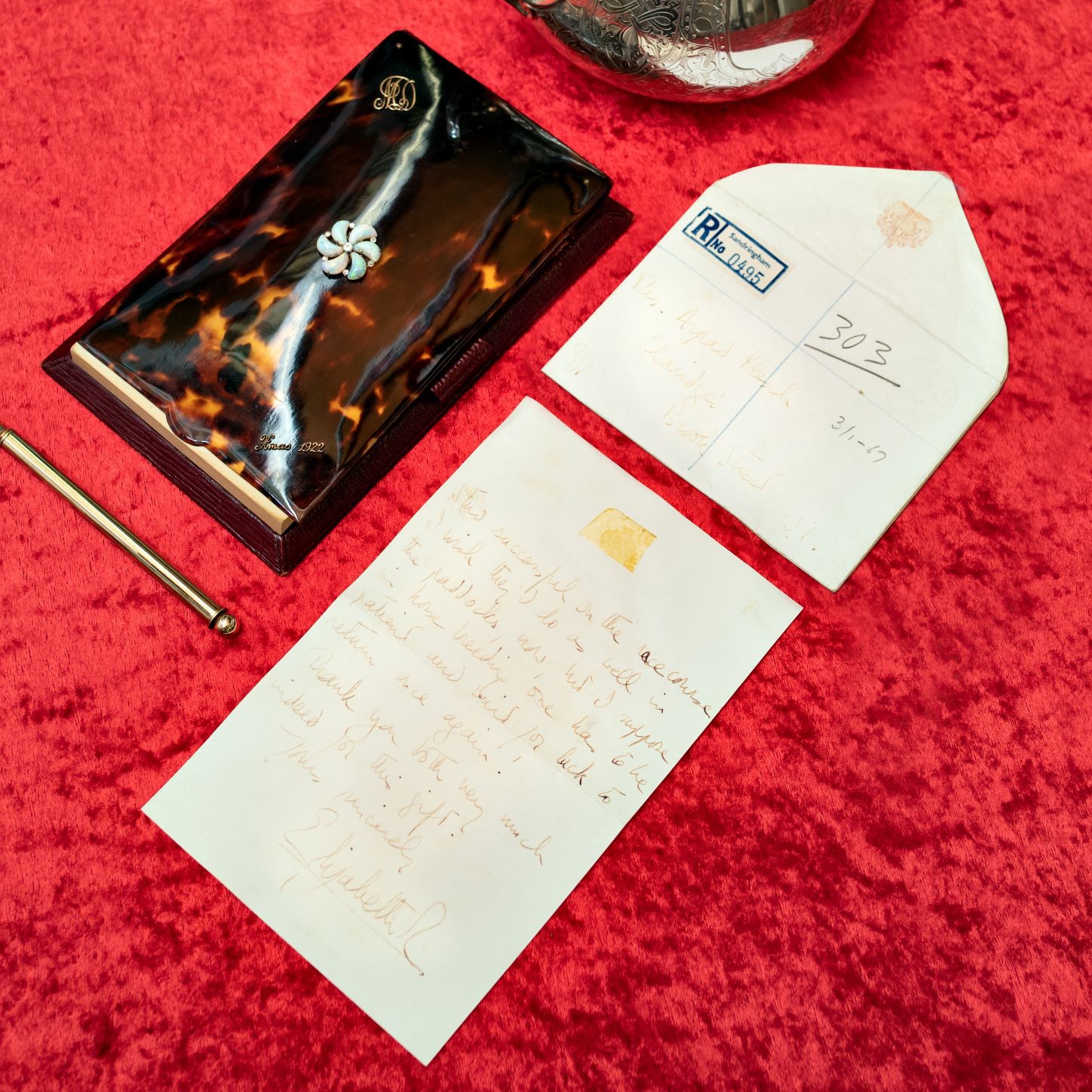Eppli auctions handwritten letter by Queen Elizabeth II

in the context of an auction on 26 November 2022 in Leinfelden-Echterdingen, the Stuttgart-based auction house offers, apart from other excellent objects on the topic “British Royal House”, a very special rarity in its Historica section: a handwritten two-page letter by the recently deceased Queen Elizabeth II (1926-2022) to a passionate rider from the year 1966.
Of regal origin
As there are usually no autographs of the Royal House, this letter dated 31 December 1966 in ca. 19 x 12 cm format with envelope is unique. Completely handwritten by the Queen and signed with “Elizabeth R”, it had been addressed to a London-based luxury hotel, where the addressee sojourned at that time: “Mrs. Arpad Plesch, Claridge’s, Brook Street, W1”. The person in question was Ms Etti Plesch, née Countess Maria von Wurmbrand-Stuppach (1914-2003), who married the prosperous Hungarian lawyer Dr Arpad Plesch in her sixth marriage in 1954. All her passion was equestrian sport, just like that of Queen Elizabeth II. So, her animals won numerous races, including the Epsom Derby, the most prestigious race of England, twice. The title of her autobiography, “Horses and Husbands”, is also dedicated to her love for horses, which obviously connected her closely with the British queen. She used to reside in Monaco; however, also used to stay in Germany, where her roots were, for important horse races.
Personal words of esteem
“Madam Plesch”, as the recipient of the letter had been addressed in the 1990s according to the information from the person handing it in, died in the year 2003. After her death, only a few of the persons that had been close to her received personal mementos from her residence in Germany including this handwritten letter with the following wording: “Dear Mrs. Plesch, I was so delighted with the lovely picture of some (?) of the Sandringham herds (?) which I received from you and Mr. Plesch for Christmas. It was extremely kind of you to think of giving me the studies of breeds (/ herds?) of some of my old favourites who had all helped to make the Sandringham stud successful on the race course. I wish they’d do as well in the paddocks, now, but I suppose in horse breeding, one has to be patient and wait for luck to return once again! Thank you both very much indeed for this gift. Yours sincerely Elizabeth R”.






